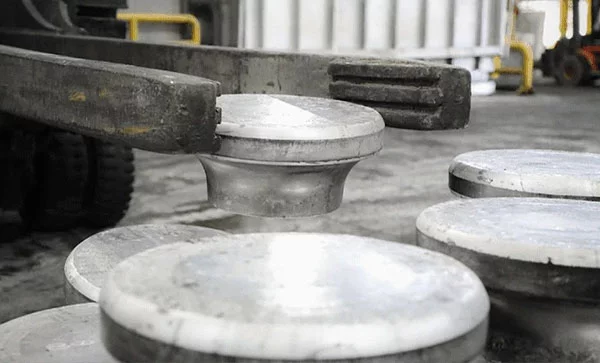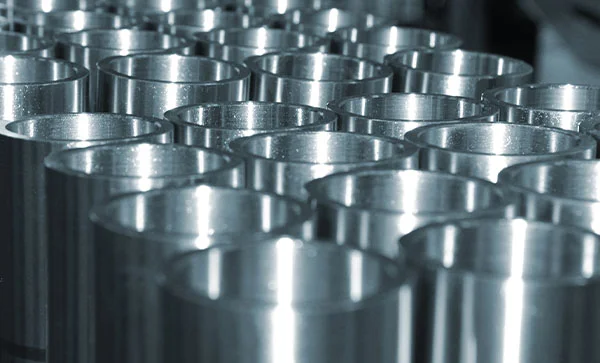Shandong Qilu lndustrial Co.,Ltd.
Revolutionizing Production: The Advantages of Cold Forging Process Unveiled
Introduction

Cold forging process has emerged as a game-changer in manufacturing, revolutionizing the way various industries produce components. This innovative technique offers numerous advantages over traditional hot forging methods, leading to improved efficiency, cost-effectiveness, and quality. In this blog post, we delve into the intricacies of cold forging, exploring its benefits and applications across different sectors.
Understanding Cold Forging Process
Cold forging, also known as cold forming or cold heading, involves shaping metal at room temperature using high-pressure dies and punches. Unlike hot forging, which requires heating the metal above its recrystallization temperature, cold forging eliminates the need for thermal treatment. Instead, it relies on the plastic deformation of the material to achieve precise shapes and dimensions.
Advantages of Cold Forging
- Enhanced Material Properties: Cold forging preserves the inherent properties of the metal, such as strength, hardness, and ductility, resulting in components with superior mechanical properties.
- Cost Efficiency: By eliminating the need for heating furnaces and reducing material waste, cold forging offers significant cost savings in production.
- Complex Geometries: The cold forging process allows for the creation of intricate shapes and complex geometries with tight tolerances, enhancing design flexibility.
- High Production Rates: With rapid cycle times and minimal downtime, cold forging enables high-volume production of components, meeting the demands of various industries.
- Surface Finish and Dimensional Accuracy: Cold forged parts exhibit excellent surface finish and dimensional accuracy, minimizing the need for secondary operations such as machining or grinding.
Applications of Cold Forging
Cold forging finds extensive applications across diverse industries, including automotive, aerospace, electronics, and construction. Commonly produced components include bolts, screws, shafts, gears, and fasteners. The ability to manufacture parts with precise dimensions and consistent quality makes cold forging indispensable in sectors requiring reliability and performance.
Case Study: Automotive Industry
In the automotive industry, cold forging has revolutionized the production of critical components such as transmission gears, steering system parts, and engine components. The superior strength-to-weight ratio of cold forged parts contributes to lighter vehicles with improved fuel efficiency and performance. Additionally, the cost savings and streamlined production processes offered by cold forging align with the automotive industry’s objectives of sustainability and competitiveness.
Comparison of Cold Forging and Hot Forging

| Aspect | Cold Forging | Hot Forging |
|---|---|---|
| Temperature | Room temperature | Above recrystallization temperature |
| Material Properties | Preserves material properties | Alters material properties |
| Energy Consumption | Lower energy consumption | Higher energy consumption |
| Tooling Wear | Reduced tooling wear | Increased tooling wear |
| Production Rate | High production rates | Slower production rates |
| Surface Finish | Excellent surface finish | Surface scale may require post-treatment |
| Design Flexibility | Intricate shapes and geometries | Limited design flexibility |
FAQ
Q:Is cold forging suitable for all types of metals?
A:Cold forging is primarily used for ductile materials such as aluminum, steel, and titanium. However, certain brittle materials may not be suitable for cold forging due to the risk of cracking or fracturing.
Q:How does cold forging compare to hot forging in terms of energy consumption?
A:Cold forging generally requires less energy compared to hot forging since it eliminates the need for heating furnaces and reduces material waste. This makes it a more sustainable and environmentally friendly manufacturing process.
Q:Can complex shapes be achieved through cold forging?
A:Yes, cold forging is capable of producing complex shapes and intricate geometries with high precision. Advanced tooling and die design enable manufacturers to create a wide range of components to meet specific requirements.
Q:What are the limitations of cold forging?
A:While cold forging offers numerous advantages, it may not be suitable for all applications, particularly those requiring extreme deformation or forming of very large parts. Additionally, tooling costs and initial setup expenses may be higher compared to conventional machining methods.
Conclusion
In conclusion, the cold forging process represents a significant advancement in manufacturing technology, offering unparalleled advantages in terms of material properties, cost efficiency, design flexibility, and production scalability. Its widespread adoption across industries underscores its importance in modern manufacturing practices. As industries continue to seek innovative solutions for enhanced productivity and performance, cold forging remains at the forefront of technological evolution, driving progress and efficiency in production processes.
